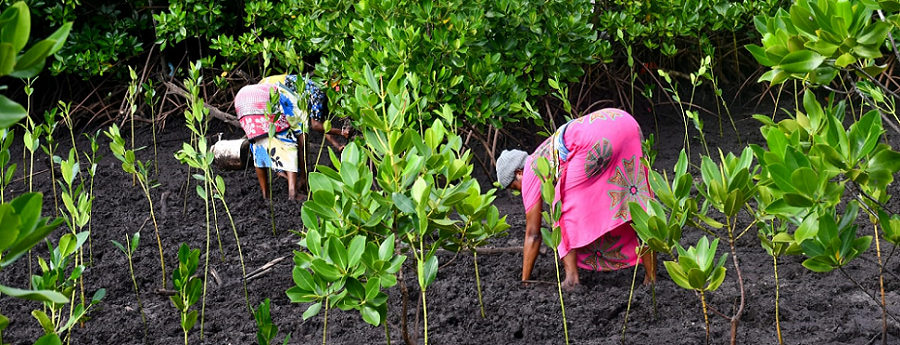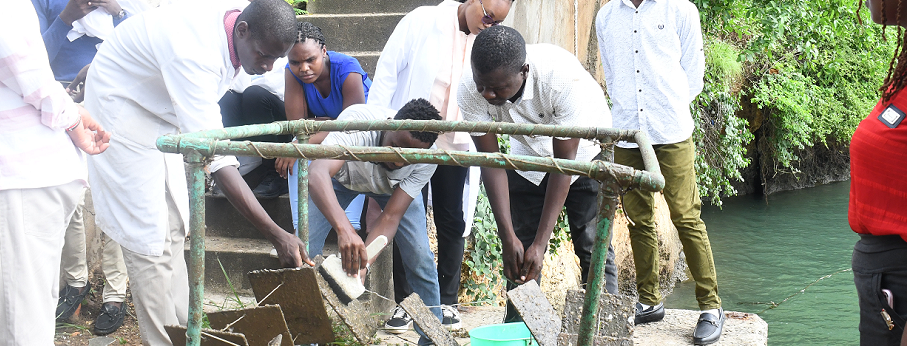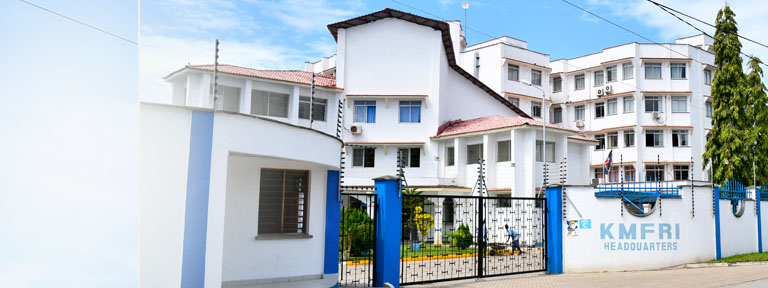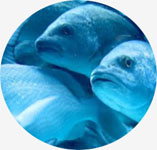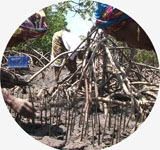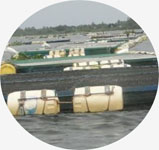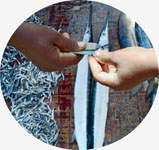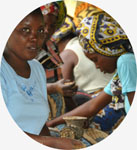By Dr Kimani, Brian Isoe & Eugene Kasuku
Kenya Marine and Fisheries Research Institute, together with key stakeholders, converged at the Royal Court Hotel in Mombasa County from the 16th to 18th of July, 2025, to share key findings, insights, and lessons learned from the ongoing pilot integration of Electronic Monitoring (EM) systems on Kenya-flagged fishing vessels. The theme of the event, “Improving Kenya’s marine fisheries transparency through electronic monitoring set the stage for three days of meaningful dialogue, collaborative data sharing, and strategic planning for a brighter, sustainable future for our fisheries. This innovative pilot project aspires to enhance transparency and sustainability in Kenya's marine fisheries by harnessing technology to collect and analyze crucial fisheries data, paving the way for responsible stewardship of our ocean resources.
Dr. Kimani addressing fisheries actors during the session at Royal Court hotel.
One of the recurring topics at the workshop was the critical role of electronic monitoring in addressing long-standing data gaps in Kenya’s fisheries sector. Speaking at the event, Dr. Kimani of the Kenya Marine and Fisheries Research Institute emphasized the limitations of traditional human observer programs.
“Human observer data covers only about 5% of fishing trips compared to EM, which can achieve nearly 80% coverage. Species identification and verification are also far more accurate when video footage can be reviewed repeatedly,” Dr. Kimani.
This is where EM proves its strength, going beyond the limitations of human observers. EM is a tried-and-tested tool that increases openness and compliance in large-scale fisheries worldwide, using cameras, GPS, computers, and sensors to remotely record and transmit fishing data.
The findings being discussed were from four vessels that were equipped with cameras for the entire piloting phase to achieve several objectives, including: accessing and generating reliable, accurate data for compliance, science, and training purposes. They also aimed to demonstrate and validate the usefulness and effectiveness of electronic monitoring in overseeing our fisheries activities.
The pilot project demonstrated that EM is a game-changer for marine management, leveraging technology to observe, track, and regulate activities in Kenya’s waters. Data collected from selected fishing vessels as a part of this science-based collaborative initiative has highlighted the ability of EM systems to provide real-time, verifiable information on marine species, fishing practices, and ecosystem health.
Technologies employed under EM
Participants present at the workshop were introduced to the suite of technologies employed under EM, from satellite tracing to monitor vessel movements and fishing zones, to acoustic and camera monitoring to observe marine life and record fishing activity, and sensor technologies to measure environmental factors like water quality. The video data collection, a key component of EM, enables detailed records of species, size, weight, catch handling, and bycatch, creating a rich dataset that was previously hardly possible.
George from TNC sharing insights with participants.
Electronic monitoring systems serve two main purposes: they validate logbook entries by identifying discrepancies and provide oversight of catch handling practices. These systems highlight both effective and ineffective practices, allowing for opportunities for improvement. Through video reviews, responsible agencies and stakeholders can verify what is retained, what is released, and the condition of any bycatch at the time of release.
The system is also proving instrumental in understanding exactly where fishing activity is taking place, making management decisions more targeted and effective. Stakeholders also explored the potential of integrating Artificial Intelligence (AI) into EM systems to enhance data analysis, species identification, and even predict trends for more effective fisheries management.
AI generation, they noted, could lead to better, clearer data and more actionable insights; a crucial step toward achieving Kenya’s sustainability and conservation goals. The event underscored the importance of multi-agency collaboration to seal potential loopholes in implementing and using EM.
Kenya, the second country in Africa to implement the EM
With the official rollout and implementation of this program, Kenya will become the second country in Africa to highlight the essential role of ecosystem management in promoting sustainable fisheries.
During his presentation, Dr. Kimani emphasized the importance of embracing change, stating that it is not just an option but a necessity for advancing the development of the fisheries sector. He also noted that improved transparency will be vital for converting raw data into actionable plans for effective fisheries management.
The system does more than just monitor fish and fishing activities; it also collects essential oceanographic data, including temperature, salinity, and other environmental parameters. This information is crucial for understanding ecosystem dynamics and supporting effective fisheries management.
By offering comprehensive, high-quality datasets, the system promises to transform how Kenya manages its marine resources, ensuring that fisheries remain productive and sustainable.
Different participants pose for a photo.
Integration of EM systems: A significant step toward marine fisheries transparency
With the data shared, discussions held, lessons learned, and momentum built over the successful three-day workshop, Kenya is now better poised to lead the way in marine fisheries transparency and sustainability.
The integration of electronic monitoring systems marks a significant step forward; one that combines science, technology, policy, and collective will to protect our marine ecosystem.
Through the leadership of KMFRI and its partners, the integration of electronic monitoring systems promises to not only protect Kenya’s marine biodiversity, but also promote the sustainable use of our aquatic resources to improve the livelihoods and socio-economic development of communities dependent on these resources.


